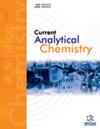柑橘精油作为潜在的杀虫剂防治黄蓟马
IF 1.7
4区 化学
Q3 CHEMISTRY, ANALYTICAL
引用次数: 0
摘要
背景:精油(EO)被公认为具有强大的杀虫活性,并被广泛认为是很有前景的害虫控制剂。研究方法在实验室条件下进行了生物测定,评估了七种商用柑橘 EO 对全球植食性害虫黄蓟马的杀虫活性。此外,还使用气相色谱-质谱法(GC-MS)分析了这些环氧乙烷的化学成分。结果显示在已鉴定的 45 种化合物中,主要成分为 d-柠檬烯(23.77%-95.10%)、茉莉酸甲酯(38.76%)和乙酸芳樟酯(34.55%)。橙花油、甜橙油、柑橘皮油、佛手柑油、青柠油、柠檬油和葡萄柚油对黄曲霉具有良好的杀虫活性,但没有明显的驱虫活性。橙花油和甜橙油的杀虫毒性较高,半数致死浓度分别为 0.20 克/升和 0.37 克/升。在盆栽实验中,处理 7 天后,橙花油(720.00 g a.i.-hm-2 时为 91.14±1.27%,900.00 g a.i.-hm-2 时为 100%)、甜橙油(900.00 g a.i.-hm-2 时为 91.14±5.52%(900.00 g a.i.-hm-2)、橘皮油(96.20±2.19%(720 g a.i.-hm-2)和 100%(900.00 g a.i.-hm-2))、柠檬油(96.20±2.19%(900 g a.i.-hm-2))和酸橙油(97.47±2.53%(900.00 g a.i.-hm-2))。结论综上所述,橙花油和橘皮油中含有 d-柠檬烯和茉莉酸甲酯,与测试的其他环氧乙烷相比,这两种环氧乙烷具有更快、更有效的杀虫活性,因此有望成为化学杀虫剂的替代品。本文章由计算机程序翻译,如有差异,请以英文原文为准。
Citrus Essential Oils as Potential Insecticides Against Thrips flavus
Background: Essential oils (EOs) are recognized for their potent insecticidal activity and are widely considered promising agents for pest control. Methods: The insecticidal activity of seven commercial citrus EOs against the global phytophagous pest Thrips flavus was evaluated using bioassays conducted under laboratory conditions. Moreover, the chemical composition of these EOs was analyzed using gas chromatography-mass spectrometry (GC-MS). Results: Among the 45 identified compounds, the major constituents were d-limonene (23.77%– 95.10%), methyl jasmonate (38.76%), and linalyl acetate (34.55%). Orange flower oil, sweet orange oil, tangerine peel oil, bergamot oil, lime oil, lemon oil, and grapefruit oil exhibited good insecticidal activity against T. flavus without demonstrating significant repellent activity. Orange flower oil and sweet orange oil showed higher insecticidal toxicity, with LC50 values of 0.20 g/L and 0.37 g/L, respectively. In pot experiments, the higher control efficacy against T. flavus was found after 7 days of treatment for orange flower oil (91.14±1.27% at 720.00 g a.i.·hm−2 and 100% at 900.00 g a.i.·hm−2), sweet orange oil (91.14±5.52% at 900.00 g a.i.·hm−2), tangerine peel oil (96.20±2.19% at 720 g a.i.·hm−2 and 100% at 900.00 g a.i.·hm−2), lemon oil (96.20±2.19% at 900 g a.i.·hm−2), and lime oil (97.47±2.53% at 900.00 g a.i.·hm−2). Conclusion: Taken together, orange flower oil and tangerine peel oil, which were found to contain d-limonene and methyl jasmonate, demonstrated rapid and more effective insecticidal activity compared to the other EOs tested, which makes these two EOs promising alternatives to chemical insecticides.
求助全文
通过发布文献求助,成功后即可免费获取论文全文。
去求助
来源期刊

Current Analytical Chemistry
化学-分析化学
CiteScore
4.10
自引率
0.00%
发文量
90
审稿时长
9 months
期刊介绍:
Current Analytical Chemistry publishes full-length/mini reviews and original research articles on the most recent advances in analytical chemistry. All aspects of the field are represented, including analytical methodology, techniques, and instrumentation in both fundamental and applied research topics of interest to the broad readership of the journal. Current Analytical Chemistry strives to serve as an authoritative source of information in analytical chemistry and in related applications such as biochemical analysis, pharmaceutical research, quantitative biological imaging, novel sensors, and nanotechnology.
 求助内容:
求助内容: 应助结果提醒方式:
应助结果提醒方式:


